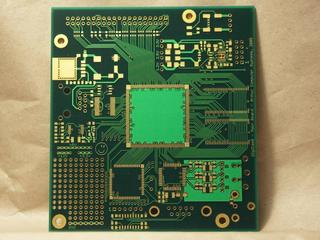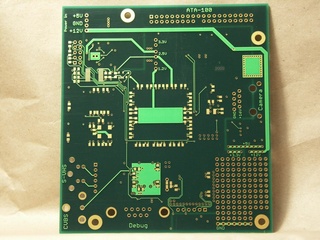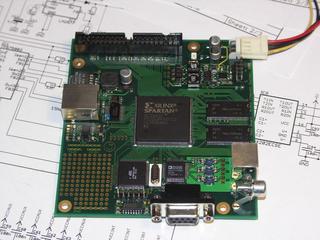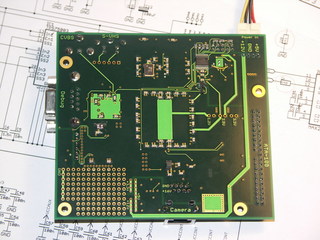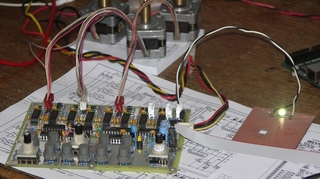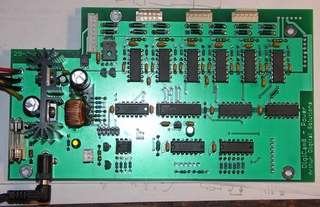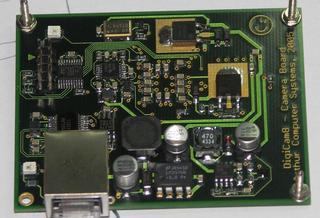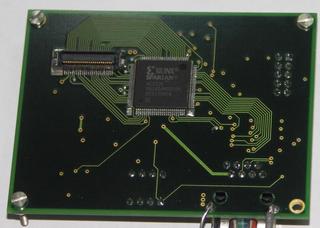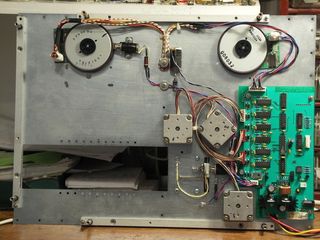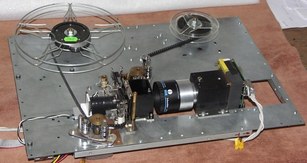|
DigiCam8 - scanner for 8mm films
It is a device to digitise 8mm amateur films.
Many companies offer transferring film to digital medium, but most
do it in television resolution, by coupling a projector and a video
camera using appropriate optics or, in some cases, simply recording
the film projected to a screen.
This scanner works differently. It has a specialised mechanical and
illumination system and its optics contains only a single objective.
The digitisation is done in a slower than normal speed, thus subjecting
the film to as small mechanical stress as possible. The other important
feature that protects the film is that the illumination uses LEDs, thus
minimising the heat stress of the original material. The diffused
illumination also decreases the visibility of scratches of the film and
it also guarantees that even brightness.
The device individually 'photographs' every frame of the film. With
this method the digital version is free from any flicker or vibration.
Converting the 16 or 24 frame per second films to a 25 frames per second
digital format is done without loss of data or generation of interpolated
frames.
At the front of the camera is a Schneider-KREUZNACH Apo-componon HM
objective. Behind that there is a 2272x1740 Sony CCD. The digitising
electronics utilises a 1536x1152 pixel area of that and delivers the
digital content to the storage controller through a 216Mbps channel.
Naturally, the position of the subframe can be controlled via the
user interface, making the compensation for differences between various
film stocks and original recording equipments possible without physically
moving the optical system. The digital images are written to a large
enough disk without compression. The device can play back the recorded
material on a TV while recording. During recording the shutter time,
illumination brightness and other parameters can be controlled from the
user interface.
That was the scanning process. The resulting stream of digital still
images are converted to DVD or other formats using a program running
on Linux. That code was written by
Bendor Research Pty. Ltd., in particular, my brother. The 1536x1152
raw reolution is important, considering the modern HDTV world.
Clicking on the images, they can be seen in higher resolution.
The four-layer controller PCB, without components:
The populated controller board: The playground is still empty.
First and second versions of the controller for the mechanical parts:
The camera circuit board:
Camera control, with the CCD board and the main control board:
The mechanism:
| Top |
Last modified: 2017.12.05 |
|

